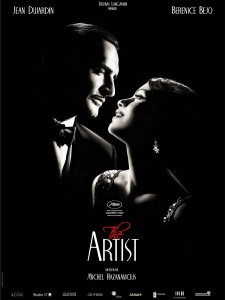 I recently watched The Black Power Mixtape 1967-1975 (Dir. Goran Olsson) on Netflix. One fact about me: I adore documentaries. Learning new things is one of my great passions, and what better way to do it than to combine leaning with my love for film. Sadly, I’ve neglected my documentary viewing habit as of late. It just so happened that I got that craving whilst perusing my Netflix account, and I soon stumbled upon this gem. I for one know next to nothing about the Black Power Movement and The Black Power Mixtape 1967-1975 served as a fascinating and powerful introduction. It features interviews from some of the movement’s leaders and strongest advocates, such as Stokely Carmichael and Angela Davis, and offers an intimate perspective into those tumultuous years in America between 1967-1975.
I recently watched The Black Power Mixtape 1967-1975 (Dir. Goran Olsson) on Netflix. One fact about me: I adore documentaries. Learning new things is one of my great passions, and what better way to do it than to combine leaning with my love for film. Sadly, I’ve neglected my documentary viewing habit as of late. It just so happened that I got that craving whilst perusing my Netflix account, and I soon stumbled upon this gem. I for one know next to nothing about the Black Power Movement and The Black Power Mixtape 1967-1975 served as a fascinating and powerful introduction. It features interviews from some of the movement’s leaders and strongest advocates, such as Stokely Carmichael and Angela Davis, and offers an intimate perspective into those tumultuous years in America between 1967-1975.
The thing that I liked best about this film is that it feels like a time capsule, and this feeling is no accident. There is a wonderful story behind this documentary. The film is a mesh of old interviews and stories from a group of Swedish journalists who came to the States and were interested in racial conflict in America. Evidently, the director, Goran Olsson, found the footage down in the depths of Swedish Television’s cellar, where it had been left there for 30 years. Olsson decided to take the old interviews, and throw in some new music and commentary from intellectuals and musicians such as Questlove and Erykah Badu to help tie the film together.
This is certainly one of the most interesting and emotional documentaries I have seen in some time. The film of course does not claim to tell the whole story of the Black Power Movement, yet the interviews it contains successfully challenged my views of militant uprisings such as The Black Panthers. It’s beautifully simple in its construction and the film keeps a good flowing narrative of the Movement, seamlessly integrating the various interviews to tell a cohesive story. We see the early stirrings of the Black Power Movement, to the rise of the Black Panthers, moving through to the exile of the Panther party leaders and the numerous assassinations of powerful figures such as Martin Luther King Jr., JFK and Robert Kennedy, that shook the political landscape. In the film, a reporter comes across of group of young black adults, outside the funeral of Robert Kennedy, who lament the deaths of these powerful individuals pushing for social change and equal rights. Their fear is that there is no future for them. And indeed, this film demonstrates that the future did look bleak.
The answers gained from the film’s subjects are eye opening, in part, because the questions from the Swedish reporters are so innocent and earnest. Rather than asking loaded questions, the reporters genuinely want to learn what is happening. Some of their inquiries are almost embarrassing. One particularly powerful scene demonstrating this occurs when a reporter asks an imprisoned Angela Davis about the Black Panthers activities and her thoughts on if violent confrontation is necessary for them to pursue their cause. Davis is visibly angered by the question, and speaks with a controlled fury about the daily threat of violence perpetrated by whites against black people and its long history. Davis states that asking if she approves of violence makes no sense, and declares that someone who would ask a question like that, clearly has no idea of the context from which the Black Power Movement arose.
I highly recommend this film for anyone, particularly those interested in the history of civil rights and racial conflict in the United States.

